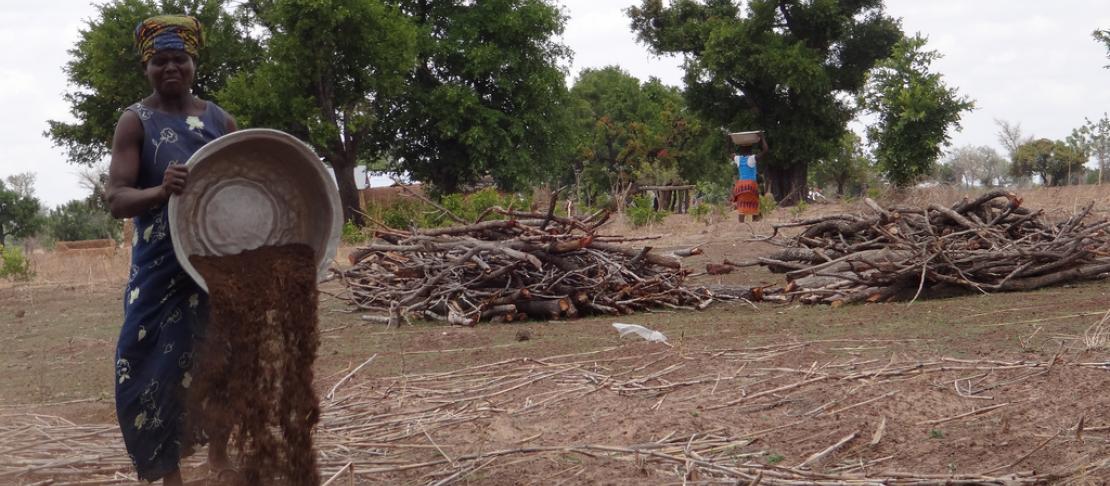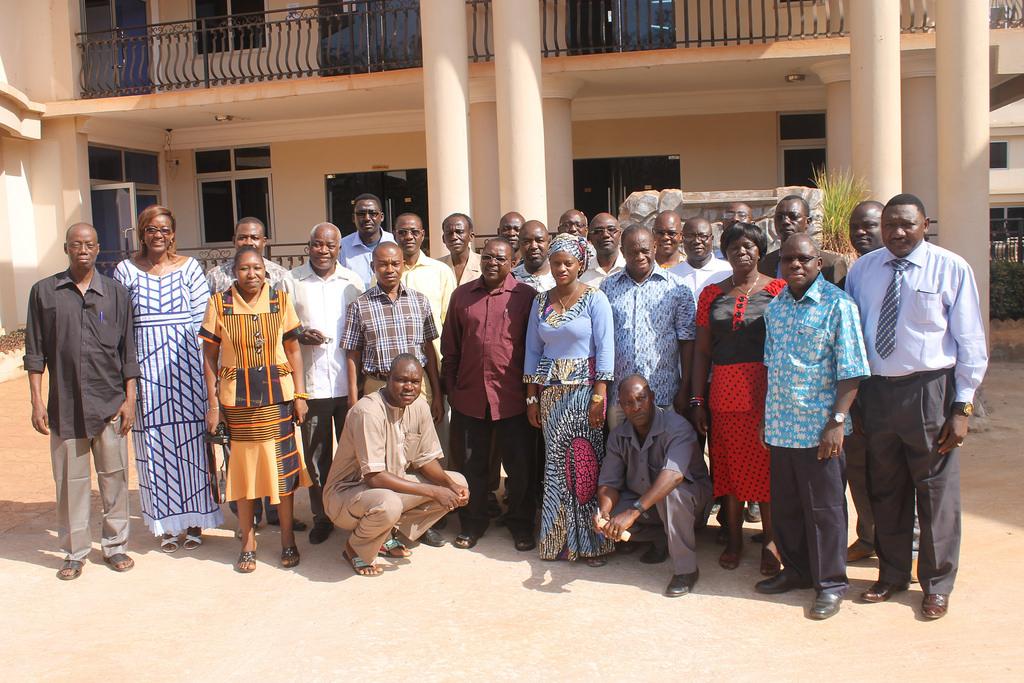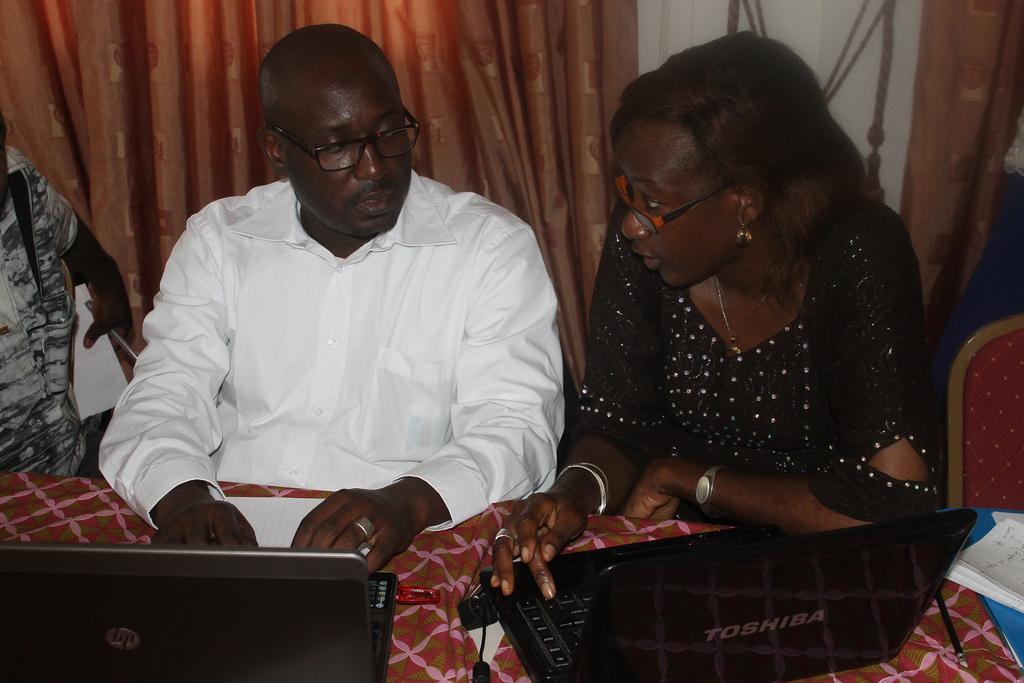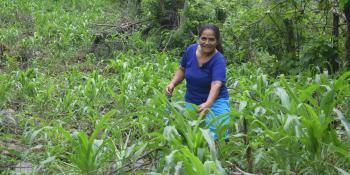“Opening the sesame” of the climate-smart village model in West Africa

The climate-smart village model is like the “sesame” in the story of Ali Baba and the forty thieves, full of “treasures”, which, fully exploited, will help smallholder farmers adapt to climate change and achieve food security. In this case, the treasures are neither jewellery nor gold nor diamond, but climate-smart technologies, climate information services, local development plans, and knowledge and institutions.
The workshop gathered twenty-five representatives of research institutions, extension services and NGOs from Burkina Faso, Ghana, Mali, Niger and Senegal. The project’s objective was to test and develop, in partnership with rural communities in West Africa, a scalable climate-smart model for agricultural development that integrates a range of innovative risk management strategies. The overall goal is to build food security, promote adaptation and strengthen resilience to climate stresses through the climate-smart village model.

Twenty-five representatives of research institutions, extension and NGOs gathered to unleash the potential of the climate-smart village model. Photo: S. Touré (CCAFS)
In refining research priorities for 2014, each country presented its locally-adapated climate-smart village model, focusing on the four components; climate smart technologies, climate information services, local development plans and knowledge and institutions.
By “opening the sesame”, the workshop provided a platform to demonstrate and share lessons learned through the climate-smart village model following two years of implementation at the sites. More specifically, the workshop reviewed key achievements, success stories, gaps and innovative research niches which have helped customize the climate-smart village model to meet and overcome the overarching challenges posed by climate variability at each site.

Senagal delegation met to develop the 2014 action plan. Photo: S.Touré (CCAFS)
At the sites, the following technologies, practices and approaches have been tested and promoted: communicating downscaled seasonal forecast information, soil and water conservation technologies, crop diversification and use of drought-tolerant varieties, integrated soil fertility management and agroforestry options. Testing and demonstrations of technologies was accompanied by trainings, workshops and exchange visits to further build farmers' capacity to use the technologies and practices.
Mainstreaming gender was an integral part of the project activities, through gender-oriented constraints analysis and prioritization of activities, involvement of women in trainings and exchange visits. Through the partnership with IUCN, adaptation outcomes have been harvested in Burkina Faso, Ghana, Niger and Senegal by means of a continuous monitoring of behavioral change using the most significant change and outcome journal tools.
Participants also highlighted that inclusiveness and strong partnership are critical to ensure that activities are implemented in a holistic approach that embraces the climate-smart village model. Further, given that women play a key role in climate change adaptation, gender and social differentiation need better mainstreaming (e.g. addressing adequately and appropriately gender needs and perspectives) in designing gender-oriented responses and strategies.
Participants reckoned that to unleash the full potential of the climate-smart village model and enjoy the "treasures", behavioral change, moving away from business as usual, innovativeness and consolidated partnership are indeed needed. Inclusiveness and integration among climate-smart agriculture interventions is also required - “the whole is greater than the sum of the parties”.
Dr Abdoulaye Saley Moussa is an agronomist and holds a PhD in Environmental Sciences (North-West University, Potchefstroom, South Africa). He has over 10 years of research and development experiences on integrated natural resource management (sustainable land management for adaptation to climate change) and food security issues. He is currently a Science Officer for CCAFS West Africa.
Dr Mathieu Ouédraogo holds a Ph.D. in Economics from Ouagadougou University in Burkina Faso, a Master degree in Development, Environment and Societies from University of Liège, in Belgium and an Engineer degree in Agricultural Economics from the lnstitut Agronomique et Vétérinaire Hassan II in Morocco. He is currently a visiting scientist with CCAFS West Africa.
Both are based with International Crops Research Institute for the Semi-Arid Tropics (ICRISAT) in Bamoko, Mali.



